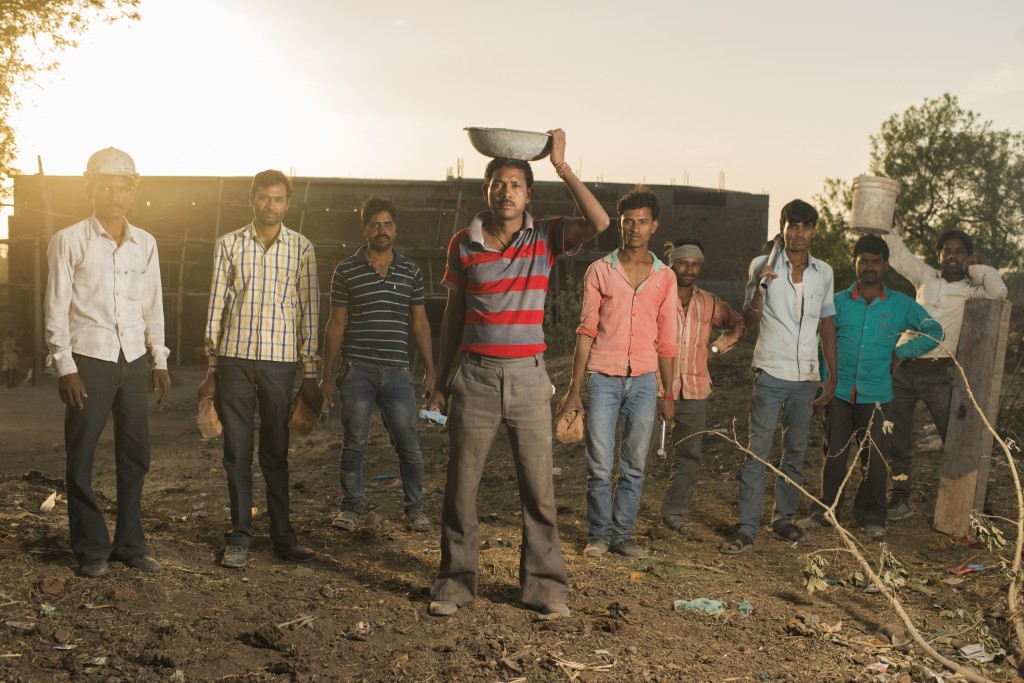An Interview with photographer, Jenny Koenig of Studio JKOE
Over the last six years, Jenny and Jason Koenig of JKOE photography have generously volunteered to spend time at various CFC building sites documenting the community and the impact the facilities will have. In 2014, they traveled to Malawi to document our partnership with Partners in Health in Dambe. This year they traveled to the Raghogarh district in Madhya Pradesh, India to photograph the pilot clinic there and the construction process. We sat down with Jenny to hear more about her experiences visiting the project sites, the impact these projects are having in the communities around them and how her travels have impacted her perspective on life.
How many trips have you taken for 30/30 and CFC?
My husband, Jason and I have gone to Zambia, Cambodia, Kenya, Malawi and India. Malawi was my first 30/30 trip, we were only on the ground for about five days. Our luggage actually got lost on the way there and was sent to the Congo. We had switched planes like three times at that point, and didn’t have clothes for the first few days, which made it extra fun, haha.
What was the most difficult part of these trips?
I think the biggest struggle was knowing that if I accepted something from any of these people, they would go without. I so appreciate the generosity of the people in the villages we go to, but it is hard to know that because of their hospitality they might not be able to eat.I come home and realize that all day-to-day stuff I am stressing about is really trivial.
Which parts of these trips stuck out to you?
Well, because I am such a nerd about these things, I loved that the area the clinic was serving was right on the border of Mozambique and Malawi. Seriously, I am such a huge dork that I would be like “Jason, I’m over in Mozambique, come over here!”The clinic is in Malawi, and a good chunk of the people who go to the clinic will be from Malawi, but there is a dirt road that makes up the border. People living on one side will live in Malawi and on the other will be from Mozambique but they all have access to the clinic.
What cultural similarities and differences did you notice on these trips?
We drove into a “bigger” village or settlement in Malawi, that had a farmers market and women laid out their beautiful blankets with fruit and vegetables. There were older men who were no longer working, sitting on porches in the shade playing some sort of game I had never seen. It was really interesting to see glimpses of things you would see in our society and how that translates to Malawi.Each place was different, so I don’t want to generalize. But I did notice that in a lot of the areas struggling with HIV and AIDS there were no middle aged people because so many people die of AIDS.Something that was unique to me about India was the dignity of the women, and not to say that women in other places aren’t dignified, but women in India were wearing these beautiful, ornate saris out in the fields. I loved seeing how they took pride in their appearance. The women just seemed very strong and dignified, without being superficial.
How do you navigate taking photos of people who may have never been photographed before?
One of the most important things to us when taking photos is making people comfortable, and a lot of times we are going into places where people don’t see a lot of westerners. So sometimes they are scared, or little kids wonder “what is this giant black thing in front of your face,”. Ideally we want candid shots of people living their life, rather than having them pose for us. So for Malawi, we wanted to find a way to go into this village and make people feel comfortable. The first day we were there, my husband and I took tons of photos, I mean tons. We brought a photo printer with us, and spent the night printing over a thousand pictures so that the next day we could go back to the villages and hand them back out. It was really cool to see the responses. Most of the time, I don’t think the people in this area had ever had a photo of themselves. We also think it’s really important to avoid pictures of kids looking sad and starving because in general we just don’t see that. We do see kids that aren’t getting enough food, but for the most part they seem to be really happy kids.
How did the community react to your/our presence?
The community at the Madyha Pradesh clinic in India was excited because the clinic was providing jobs and meant they had access to healthcare. For a lot of the builders, it seemed if they weren’t working on the clinic they would be out working in the field and I think it was a good change of pace for them. Even the people in the village that weren’t building the clinic were excited because they were a part of something that the whole community was excited about. We were taking photos of the workers in front of the building, and people who weren’t workers would try to stand in the photos too. I think it was kind of fun that even while we were there the builders got more attention about it.
What have these trips taught you?
I don’t want to make any generalizations, but I do come home from these trips thinking, these people are so much happier with so much less.When we were in Kenya, we saw how people take in relatives who are sick or who can’t take care of themselves. We came home and realized that our house was too big and that we just didn’t need that much space, so ever since then we have had one, if not two, people living with us.
You were able to follow a family when you visited the Madhya Pradesh clinic, what did you notice?
We got to follow one of the construction workers, Asaram, home. He was really quiet at first but he was sogreat! He and his wife, Dulari, and kids were so willing to tell their story. I think that was the first time that we spent so much time with one person or one family. We got to see their morning routine, it was really great to see the family interact. In the morning Dulari made breakfast and Asaram helped his son with homework and then Dulari left to go work in the fields and the father made sure the children got to school. I thought that was really interesting that the father was the one getting them out the door before going to work at the construction site.I think what I like about a lot of the places I have visited is the community aspect. I definitely would say that this village in India had biggest sense of community because everyone was living so close together.To learn more about Jenny Koenig and her husband Jason, or see more of their photography, visit their website.






